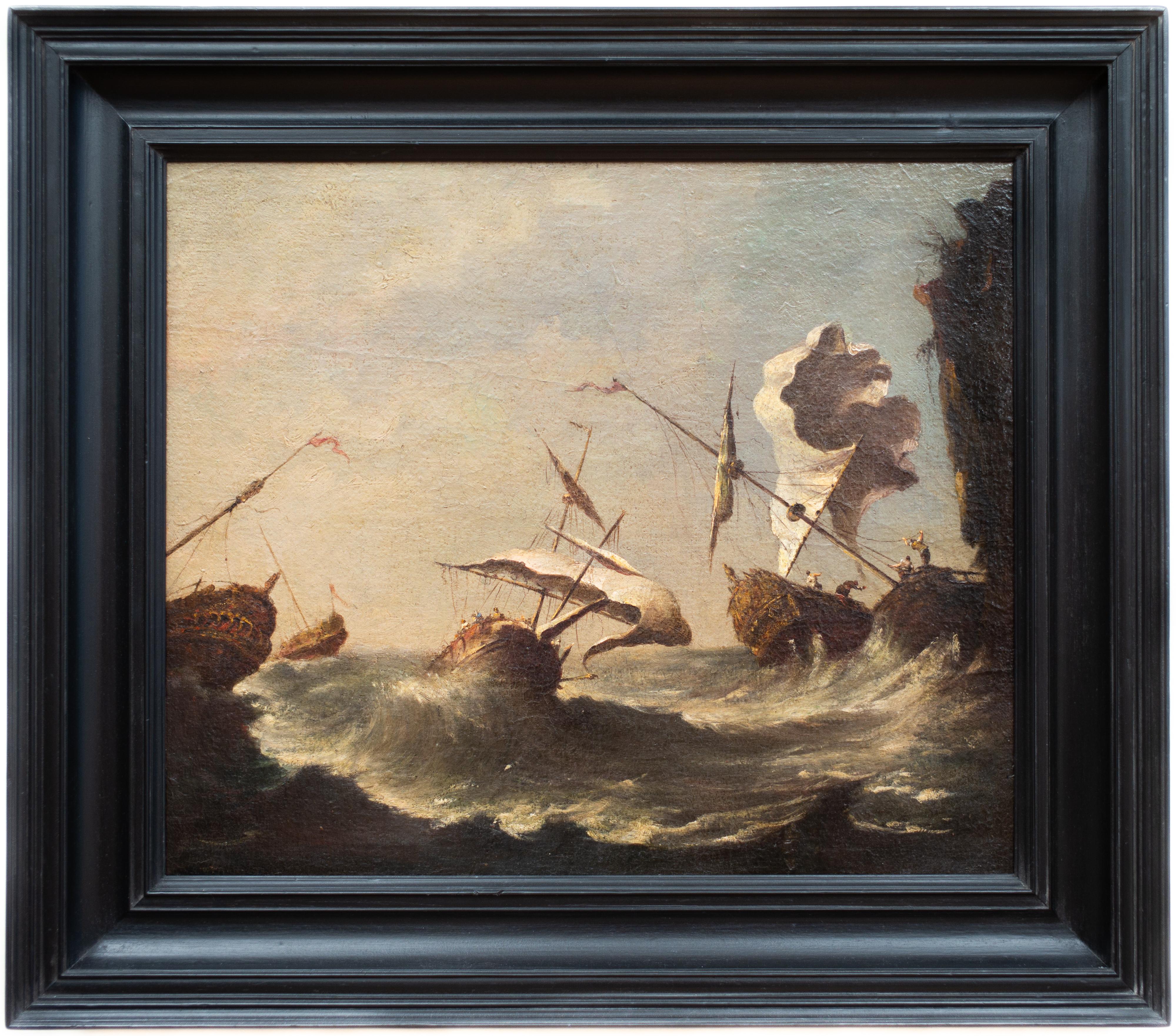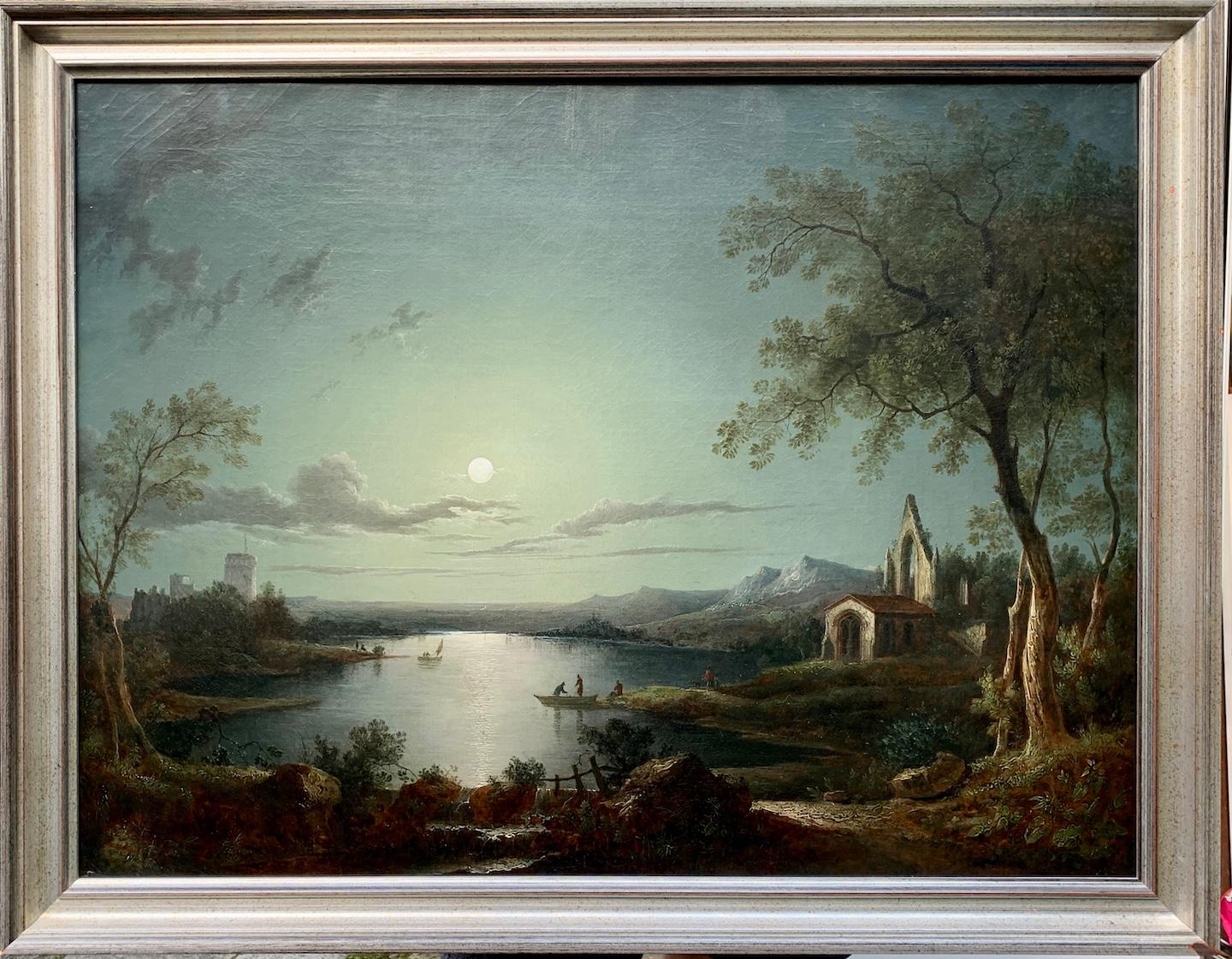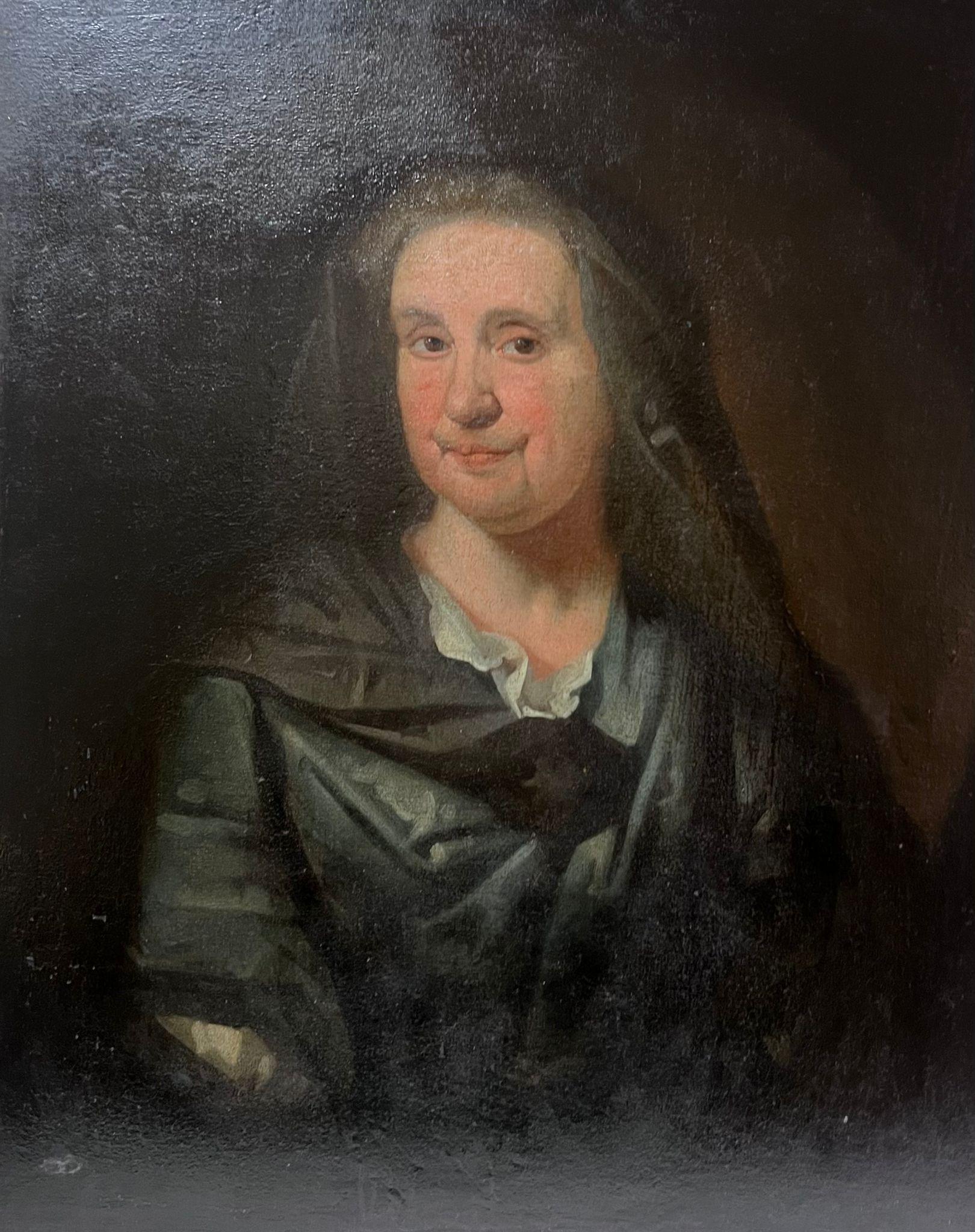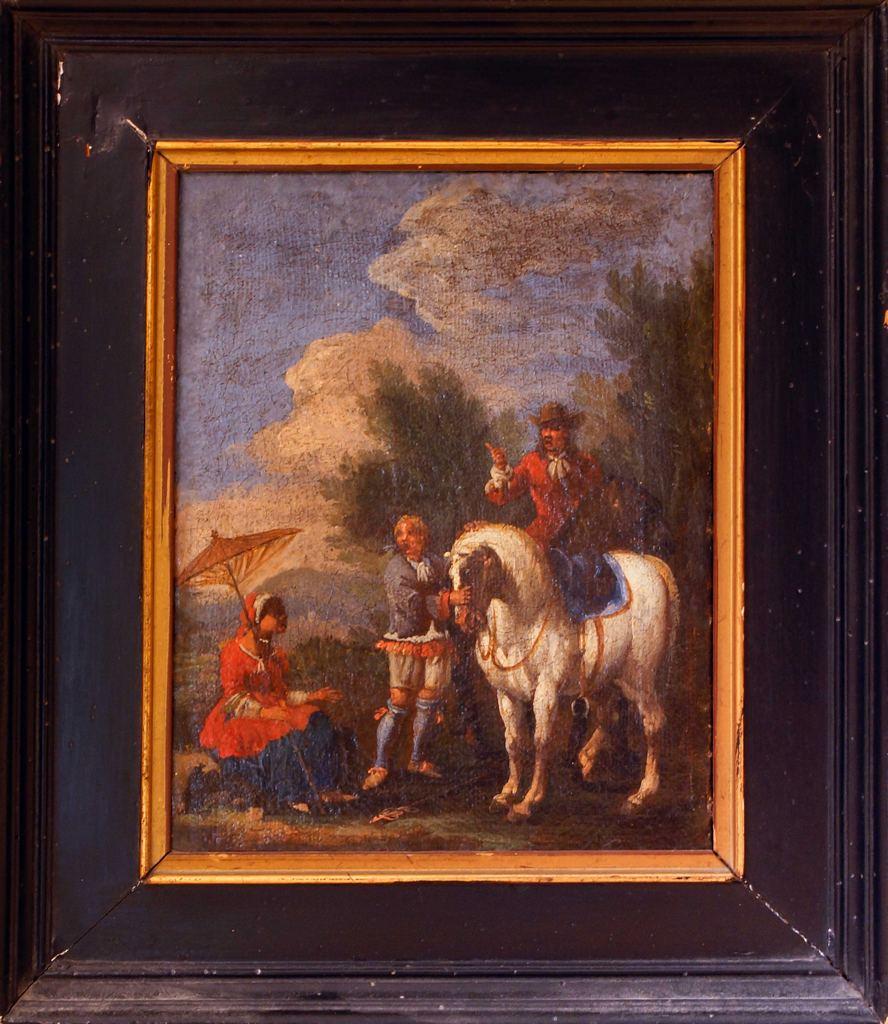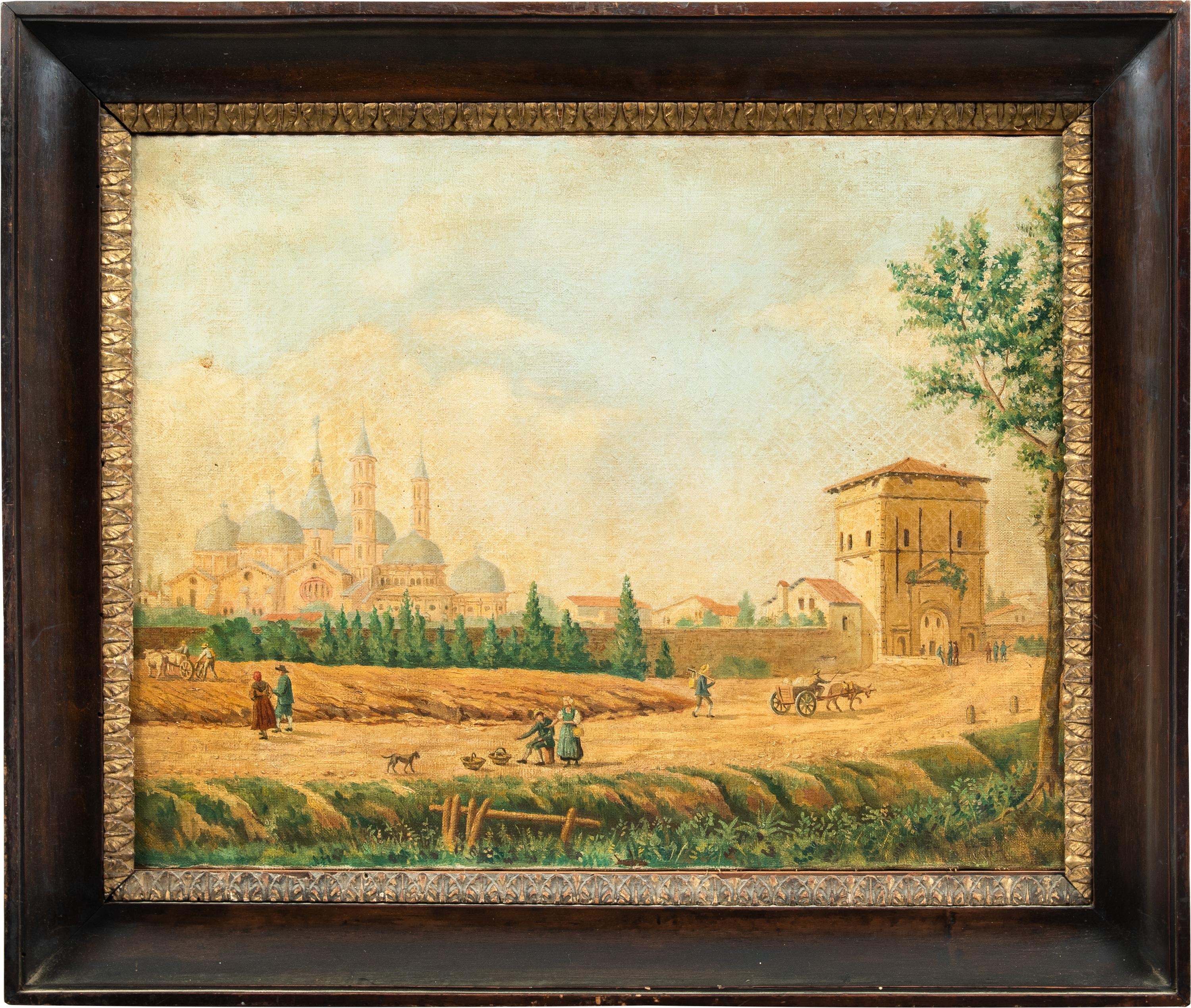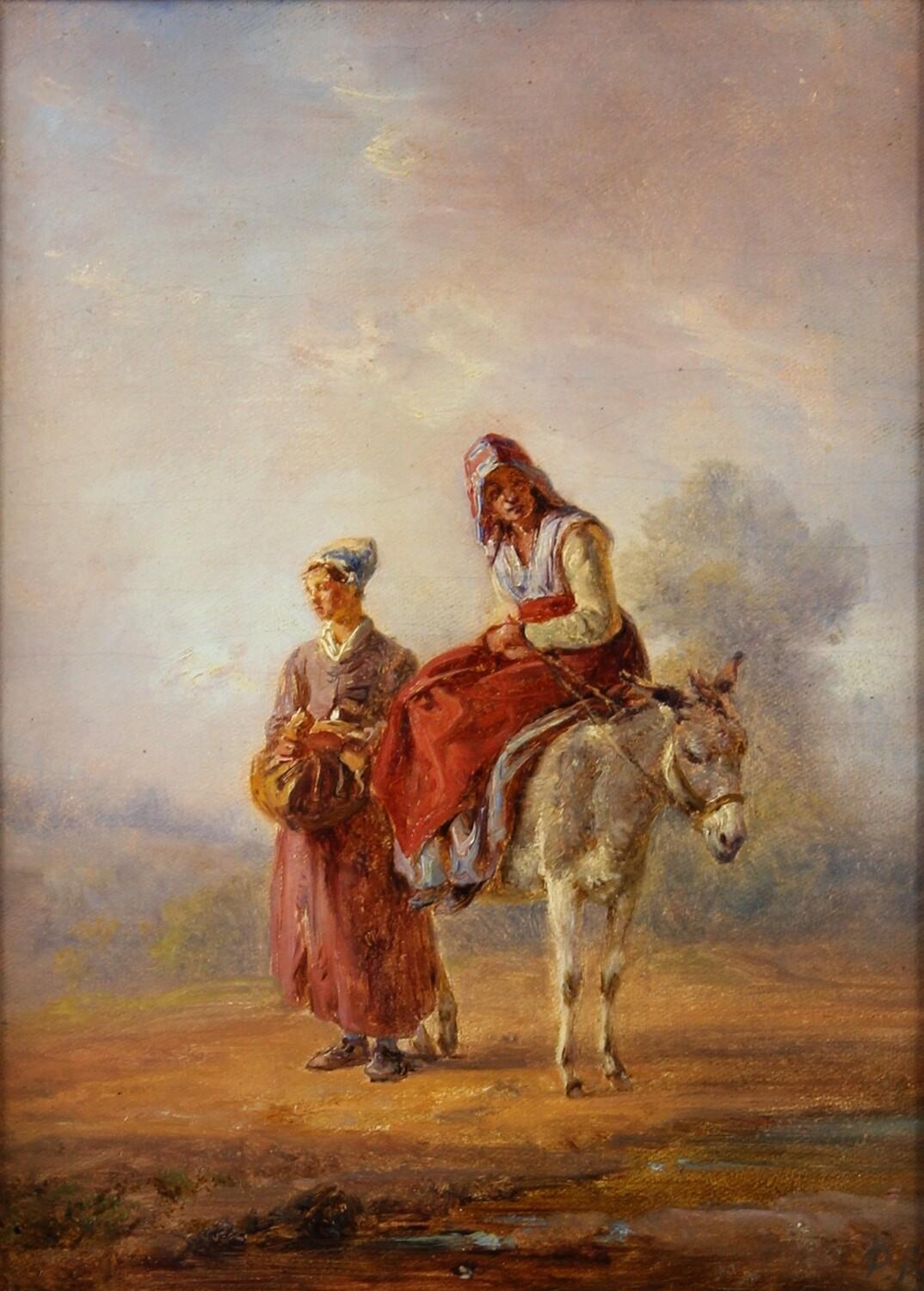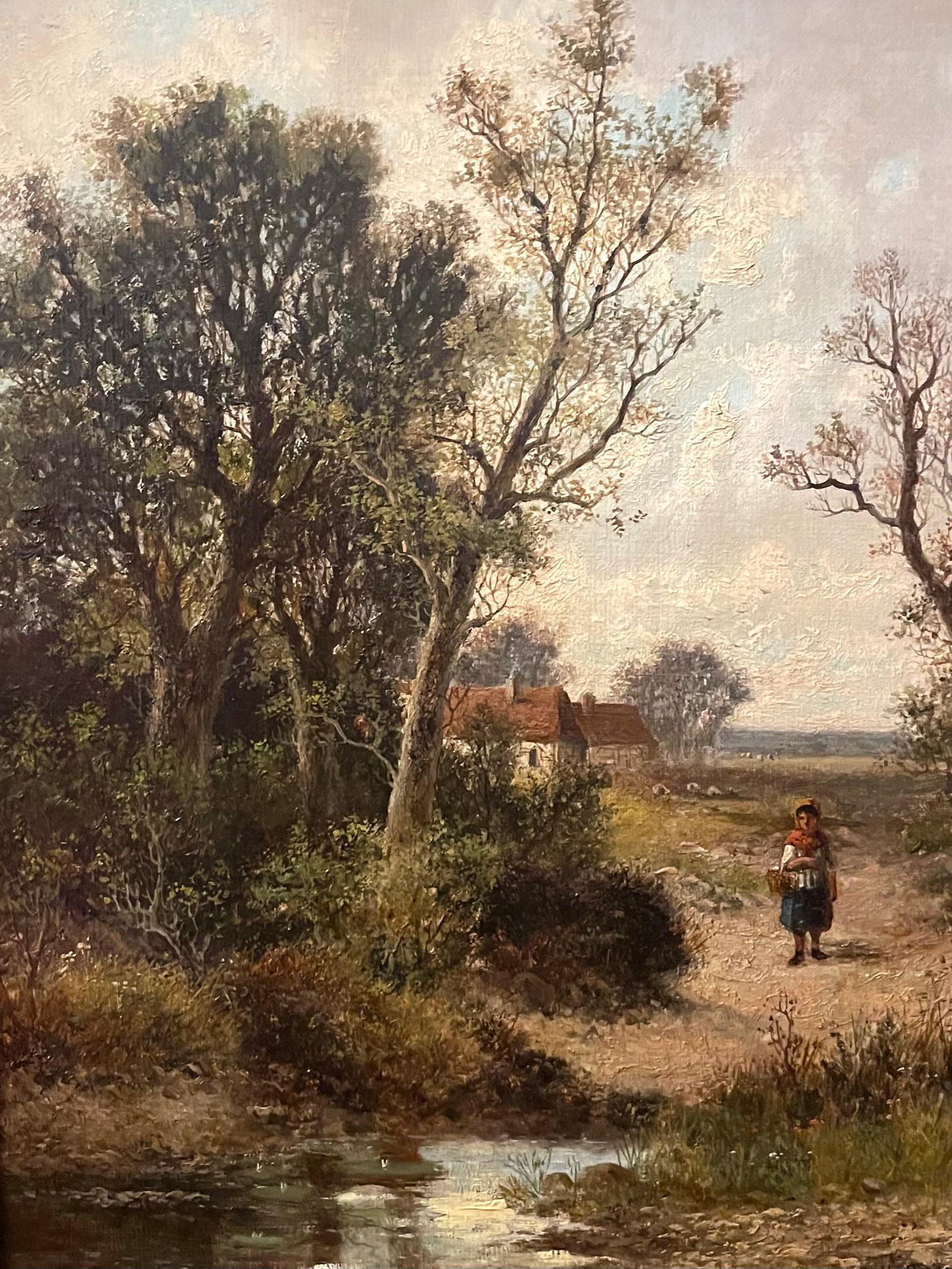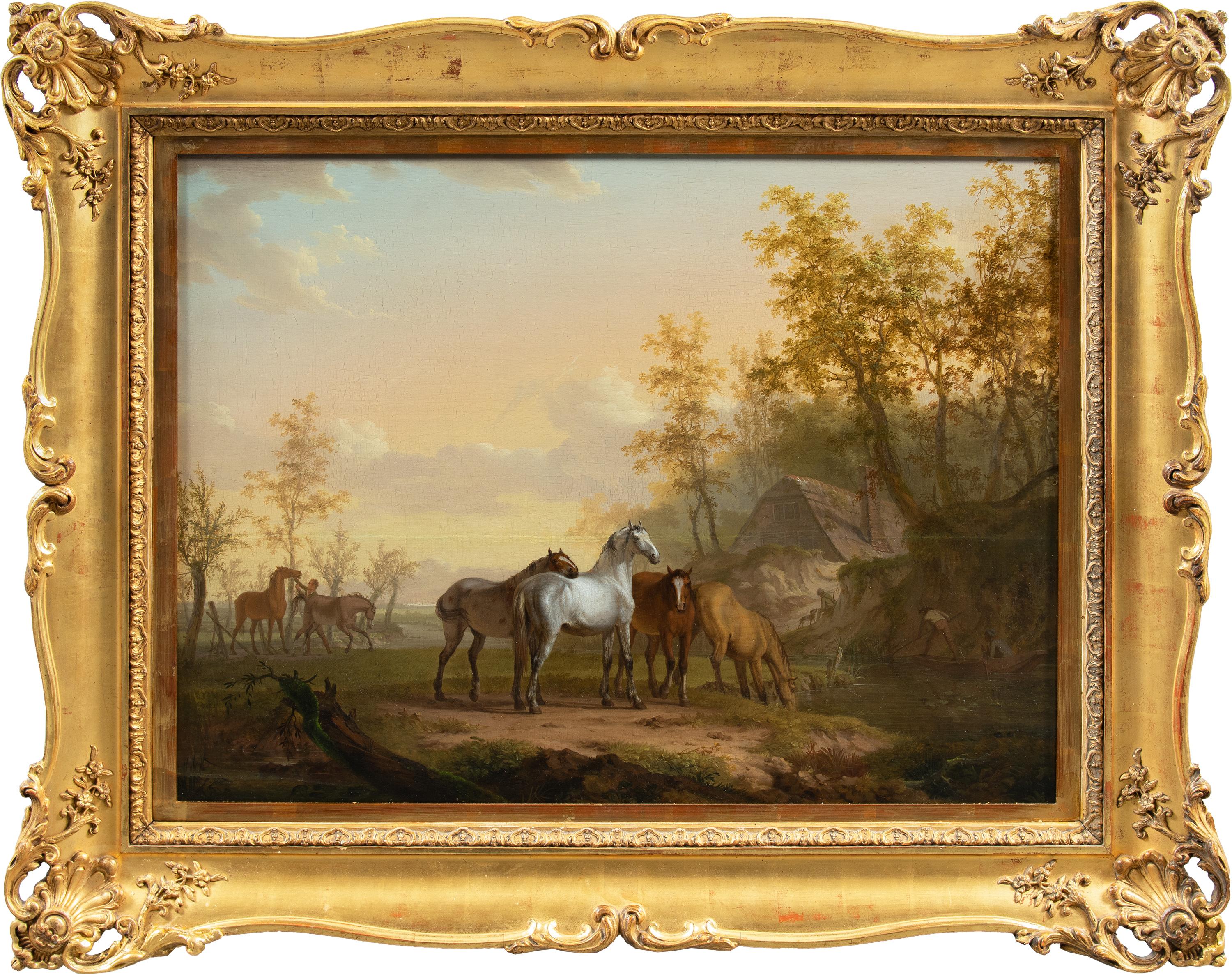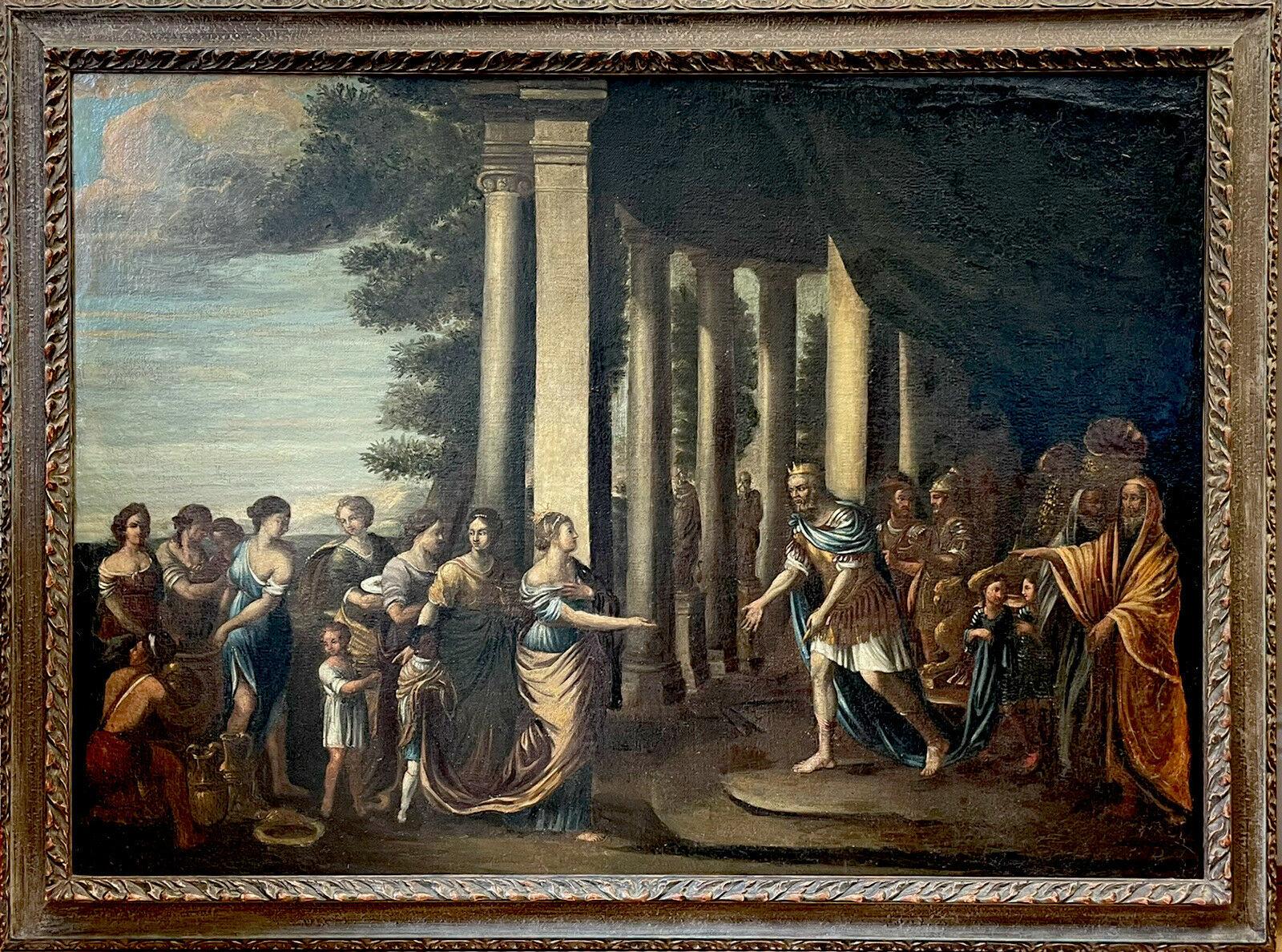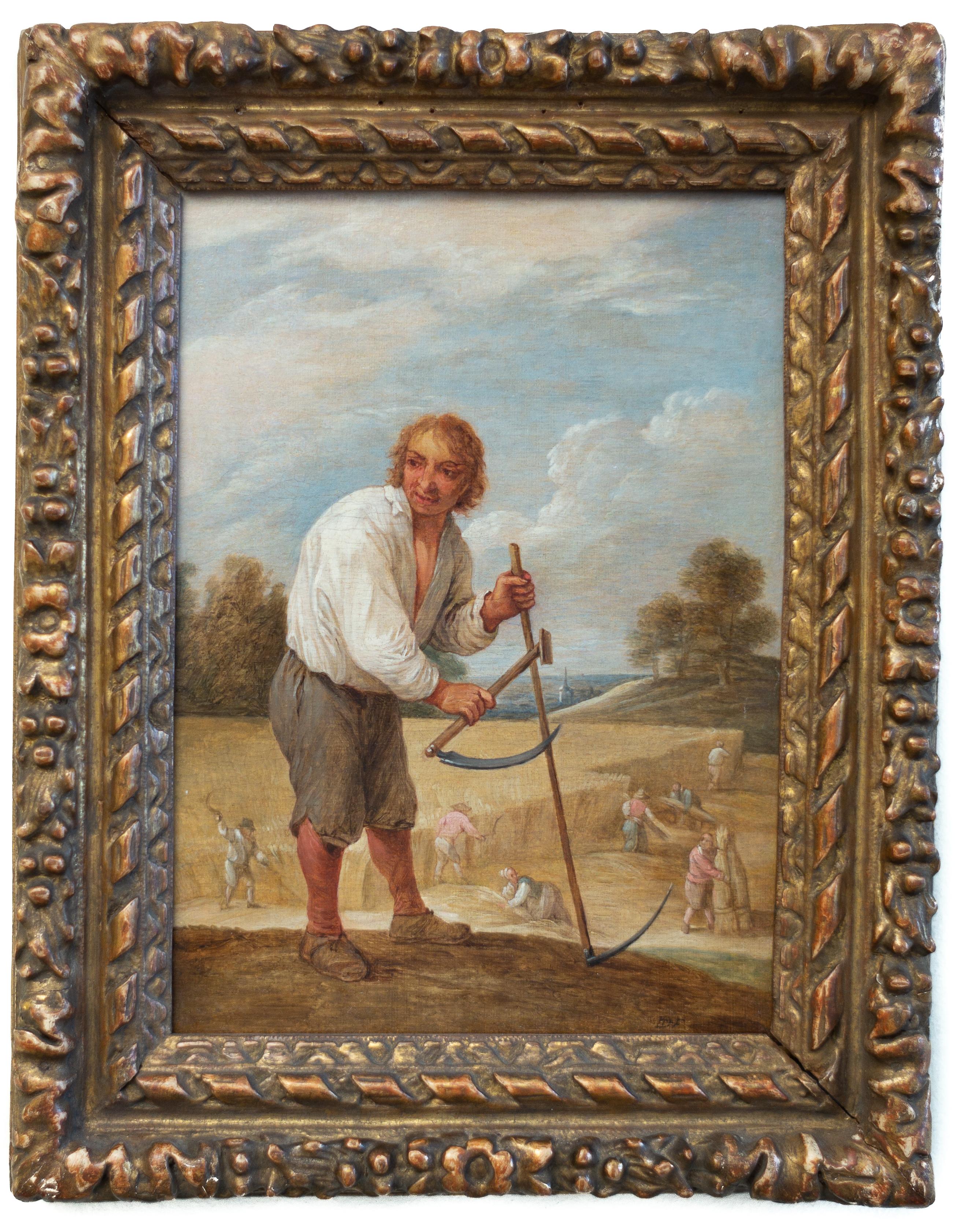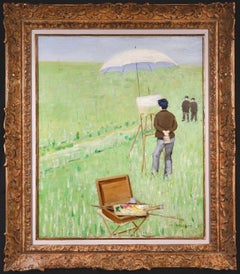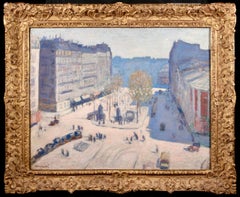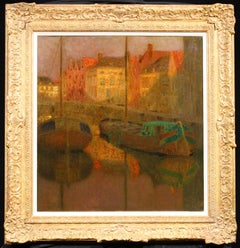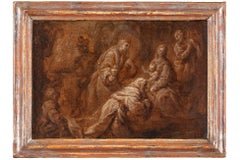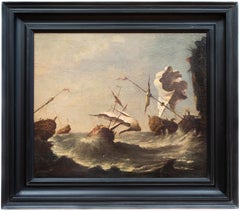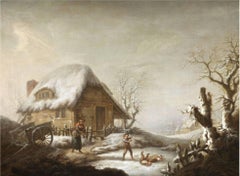
Winter Games - 18th Century Oil, Figures in Snow Landscape by George Morland
Want more images or videos?
Request additional images or videos from the seller
1 of 9
George MorlandWinter Games - 18th Century Oil, Figures in Snow Landscape by George Morlandc. 1795
c. 1795
About the Item
- Creator:George Morland (1763 - 1804, English)
- Creation Year:c. 1795
- Dimensions:Height: 27 in (68.58 cm)Width: 36 in (91.44 cm)Depth: 1 in (2.54 cm)
- Medium:
- Movement & Style:
- Period:
- Condition:Very good condition.
- Gallery Location:Marlow, GB
- Reference Number:Seller: LFA00151stDibs: LU41534353611
George Morland
George Morland (26 June 1763 in London – 29 October 1804 in Brighton) was an English painter. His early work was influenced by Francis Wheatley but after the 1790s he came into his own style. His best compositions focus on rustic scenes: farms and hunting; smugglers and gypsies; and rich, textured landscapes informed by Dutch Golden Age painting.
About the Seller
5.0
Platinum Seller
These expertly vetted sellers are 1stDibs' most experienced sellers and are rated highest by our customers.
Established in 2001
1stDibs seller since 2016
671 sales on 1stDibs
Typical response time: 3 hours
More From This SellerView All
- Painting en plein air - Impressionist Figure in Landscape Oil by Charles AngrandBy Charles AngrandLocated in Marlow, BuckinghamshireSigned and dated oil on canvas by French impressionist painter Charles Theophile Angrand. This wonderful and good-sized piece depicts an artist painting "en plain air" in a beautiful...Category
1880s Impressionist Figurative Paintings
MaterialsCanvas, Oil
- Boulevard De Clichy - Post Impressionist City Landscape Painting by Albert AndreBy Albert AndreLocated in Marlow, BuckinghamshireSigned and titled figures in cityscape oil on canvas circa 1920 by post impressionist painter Albert Andre. This stunning and good-sized work depicts a view of the Boulevard de Clichy, a famous street in the city of Paris, France on what appears to be a sunny but cool day. Signature: Signed lower left and titled & dated on original label verso Dimensions: Framed: 29"x35" Unframed: 22"x28" Provenance: New York, Durand-Ruel, Exhibition of Paintings by Albert André, 1 February -18 February, 1921 He came to Paris in 1889 as an industrial designer. At the age of 23 he enrolled at the studio of William Bouguereau at the Académie Julian, where he met Ranson, Louis Valtat and the young poet and dramatist Henry Bataille, who at the time was training as a painter. He illustrated L'étang de Berre by Charles Maurras and Les Petites Alliées by Claude Farrère. He produced cartoons for tapestries...Category
1920s Post-Impressionist Landscape Paintings
MaterialsCanvas, Oil
- Barques de Peche - Post Impressionist Landscape Oil by Henri Le SidanerBy Henri Le SidanerLocated in Marlow, BuckinghamshireSigned post impressionist landscape oil on canvas by French painter Henri Le Sidaner. This stunning piece depicts two fishing boats moored in a fishing village at sunset. The last l...Category
1890s Post-Impressionist Landscape Paintings
MaterialsOil, Canvas
- Peniches sur la Seine - Impressionist Landscape Oil - Armand GuillauminBy Jean Baptiste-Armand GuillauminLocated in Marlow, BuckinghamshireSigned impressionist landscape oil on canvas by French painter Jean Baptiste Armand Guillaumin. The work depicts barges moored on the b...Category
1880s Impressionist Landscape Paintings
MaterialsCanvas, Oil
- Bord De Mer - Impressionist Coastal Landscape Oil Painting by Willy SchlobachBy Willy SchlobachLocated in Marlow, BuckinghamshireSigned and dated pointillist landscape oil on canvas by Belgian impressionist painter Willy Schlobach. The piece depicts a coastal view looking out over the dark green sea to where it meets the powder blue sky on the distant horizon, with rock formations on either side. This work was executed in 1907 - the definitive mature period for Schlobach's work. Paintings by the artist executed between 1906 and 1908 are the pinnacle of his oeuvre and show the influence and ideas of neo impressionism brought by his friend and compatriot Theo van Rysselberghe who had learnt from Signac and Seurat in Paris. Schlobach painted numerous coastal views in this period which display a free approach to pointillism with theory being displaced by a desire to create luminosity and effect. Signature: Signed lower right and dated 1907 Dimensions: Framed: 29"x33" Unframed: 20"x24" Provenance: Private French collection Further information: This work was executed in 1907 - the definitive mature period for Schlobach's work. Paintings by the artist executed between 1906 and 1908 are the pinnacle of his oeuvre and show the influence and ideas of neo impressionism brought by his friend and compatriot Theo van Rysselberghe who had learnt from Signac and Seurat in Paris. Schlobach painted numerous coastal views in this period which display a free approach to pointillism with theory being displaced by a desire to create luminosity and effect. Willy Schlobach first studied at the Academy in Brussels and then later in Ghent. At the precocious age of nineteen he was already at the forefront of painters in Belgium numbering among his close friends Emile Verhaeren and Theo van Rysselberghe whose instructive influence on him was of great significance. He was one of the founding members of the group 'Les XX' who were broadly speaking avant-garde and influenced by the Parisian developments in painting but by no means uniform in their style or approach (see also have lots 201 and 233). Octave Maus, a lawyer and critic was the driving force behind 'Les XX' but the most important painter was Theo van Rysselberghe. Van Rysselberghe had lived and worked in Paris and brought to Belgium an intimate knowledge and understanding of the Neo-Impressionist techniques of Seurat and Signac which were to be a great influence on the younger generation of Belgian painters such as Willy Finch and Willy Schlobach. In the late 1880s Schlobach responded with enthusiasm to these new ideas emanating from Paris and produced some well structured and highly organised pointillist work in which his favoured subject matter was coastal scenes. Schlobach was also influenced by the other main group within 'Les XX' which was best represented by Fernand Khnopff. As well as working in a pointillist manner he produced paintings full of symbolism and reminiscent of the Pre-Raphaelites whose work he had studied and admired on visits to England. It is, however, in the neo-impressionist or luminist work that Schlobach found greater freedom of expression away from the sometimes claustrophobic subject matter of the symbolists. On his visits to London Schlobach had been influenced not only by the Pre-Raphaelite painters but also by the work of Turner whose atmospheric and misty paintings...Category
20th Century Impressionist Landscape Paintings
MaterialsOil, Canvas
- Grosse Mer - Etretat - Impressionist Seascape Landscape Oil by Maxime MaufraBy Maxime MaufraLocated in Marlow, BuckinghamshireImpressionist oil on canvas seascape painting circa 1895 by French artist Maxime Maufra. This stunning work depicts a sailing boat on a vast ocean. The choppy water is painted in greens and blues. The white clouds rolling across the blue sky are beautifully shaded in purple tones. Signature: Signed lower left and titled on original label verso Dimensions: Framed: 22"x25" Unframed: 15"x18" Provenance: This work is included in the catalogue raisonne of Maxime Maufra under reference 284 Durand-Ruel, Paris (acquired directly from the artist on 5 April 1895) Durand-Ruel Galleries, New York (acquired from the above in 1895) Marlborough Fine Arts, Ltd., London (acquired after 1949) Dr. Renate Davis, London (acquired from the above) Lyon & Turnbull London, 28 November 2013, lot 111 (consigned by the above) Private Collection, New York (acquired from the above sale) Sotheby's New York, 15 November 2017, lot 101 (consigned by the above) Maufra spent several years in England, notably in Liverpool, with his father, who wanted him to become a tradesman. He decided to take up painting instead and returned to France in 1883, attracting the attention of Octave Mirbeau in his very first exhibition, and subsequently being noticed by Frantz Jourdain in 1894 and Fontenais in 1901. In 1886, he successfully exhibited two seascapes at the Salon, following which he visited Brittany in 1890, making the acquaintance of Gauguin and Sérusier in Pont-Aven; he collaborated with them on the decoration of the Pouldu Inn in 1894. He maintained his acquaintance with the Nabis group artists Henry Moret and Gustave Loiseau. He travelled in l'Isère, Belgium, and Algeria (1913), as well as Paris, the Ile de France, Brittany and Normandy. From 1895, the Galerie Durand-Ruel assured the success of his work. Maufra settled in Montmartre for about ten years during which he painted the old quarters of Paris, often around the church of St Séverin. He then turned to Brittany and Normandy for inspiration in keeping with a resolve to paint only from nature, his seascapes in particular finding favour. The influence of the Nabis on his work remains limited except in the 'synthetic' organisation of the composition. He was an admirer of Sisley and Pissarro, whose influence can be seen in his paintings. Maufra, like Valtat, went to some extent beyond Impressionism to become a forerunner of Fauvism in his use of colour. An important retrospective exhibition of Maufra's work, prefaced by René Domergue, was organised in Paris around 1950. In 2001, his work was represented in the exhibition Painters and the Sarthe Region ( Les Peintres et la Sarthe) held at the Musée de la Reine Bérengère (for the 19th century) and the Abbaye de l'Épau (for the 20th century) at Le Mans. In 2003, his work appeared in the group exhibition Brittany, Land of Painters ( Bretagne, Terre des Peintres) at the Musée des Beaux-Arts in Vannes. Museum and Gallery Holdings: Bergues: Seascapes Boston: Dusk in Douarnenez; Departure of Fishing Boats Buffalo: Transport Quittant Le Havre Chicago: Douarnenez the Town of Light Cholet: Flood Cincinnati (AM): The Coast, Bay of Douarnenez (Vue de Douarnenez) (painting) Helsinki: St-Guénolé Le Havre: Moonrise in Brittany Manchester: Springtime in Lavardin Montpellier: Hills of Morgat Mulhouse: Low Tide Nantes (MBA): La Prairie d'Amont (1888, oil on canvas); Pointe du Raz; Heavy Swell; The Loir Dam in Poncé (oil on canvas) Paris (Mus. d'Orsay): Brittany Landscape...Category
1890s Impressionist Landscape Paintings
MaterialsOil, Canvas
You May Also Like
- 17th Century by Simone Cantarini Adoration of The Magi Painting Oil on CanvasLocated in Milano, LombardiaSimone Cantarini (Pesaro 1612 - Verona 1648) Adoration of the Magi Oil on paper applied to canvas, cm. 16,5 x 24 – with frame cm. 22 x 29 Antique sh...Category
Early 17th Century Old Masters Figurative Paintings
MaterialsCanvas, Cotton Canvas, Oil
- Shipping in Stormy Waters, Attributed to Italian Artist Francesco GuardiBy Francesco GuardiLocated in Stockholm, SEThe splendour of the tragic sea Francesco Guardi and maritime painting in Venetian art No Venetian painter was a stranger to the sea. After all, Venice was not only one of the most prominent ports of the Mediterranean, but indeed a city literally submerged in the ocean from time to time. Curiously however, the famous Venetian school of painting showed little interest in maritime motifs, favouring scenes from the iconic architecture of the city rather than seascapes. That is why this painting is a particularly interesting window into not only the painter Francesco Guardi himself – but to the significance of the element of water in art history, in absence as well as in the centre of attention. Whether it be calm, sunny days with stunning views of the palaces alongside the canals of Venice or – more rarely – stormy shipwrecking tragedies at sea, water as a unifying element is integral to the works of painter Francesco Guardi (1712–1793). During his lifetime, Venetian art saw many of its greatest triumphs with names like Tiepolo or Canaletto gaining international recognition and firmly establishing Venice as one of the most vibrant artistic communities of Europe. While the city itself already in the 18th century was something of an early tourist spot where aristocrats and high society visited on their grand tour or travels, the artists too contributed to the fame and their work spread the image of Venice as the city of romance and leisure to an international audience, many of whom could never visit in person. Still today, the iconic image of Venice with its whimsical array of palaces, churches and other historic buildings is much influenced by these artists, many of whom have stood the test of time like very well and remain some of the most beloved in all of art history. It was not primarily subtility, intellectual meanings or moral ideals that the Venetian art tried to capture; instead it was the sheer vibrancy of life and the fast-paced city with crumbling palaces and festive people that made this atmosphere so special. Of course, Venice could count painters in most genres among its residents, from portraiture to religious motifs, history painting and much else. Still, it is the Vedutas and views of the city that seems to have etched itself into our memory more than anything else, not least in the tradition of Canaletto who was perhaps the undisputed master of all Venetian painters. Born into his profession, Francesco lived and breathed painting all his life. His father, the painter Domenico Guardi (1678–1716) died when Francesco was just a small child, yet both he and his brothers Niccolò and Gian Antonio continued in their fathers’ footsteps. The Guardi family belonged to the nobility and originated from the mountainous area of Trentino, not far from the Alps. The brothers worked together on more challenging commissions and supported each other in the manner typical of family workshops or networks of artists. Their sister Maria Cecilia married no other than the artist Giovanni Battista Tiepolo himself, linking the family to the most renowned Venetian name of the time. During almost a decade, Guardi worked in the studio of Michele Giovanni Marieschi, sometimes simply known as Michiel, a painted similar in both style and motif. Canaletto is, however, the artist Guardi is most often compared to since they shared a mutual fascination for depicting the architecture and cityscape of Venice. During the course of his career, Guardi tried his hand in many different genres. He was as swift in painting landscapes, Vedutas of Venice, sacred motifs, interiors and architectural compositions as he was in a number of other motifs. His style is typical of the Venetian school but also distinct and personal once we look a little closer. There is an absolute certainty in the composition, the choice of which sometimes feels like that of a carefully calculated photograph – yet it is also very painterly, in the best sense of the word: fluid, bold, sensitive and full of character. The brushwork is rapid, intense, seemingly careless and extraordinarily minute at the same time; fresh and planned in a very enjoyable mixture. His interiors often capture the breath-taking spacious glamour of the palaces and all their exquisite decor. He usually constructed the motif through remarkably simple, almost spontaneous yet intuitively precise strokes and shapes. The result was a festive, high-spirited atmospheric quality, far away from the sterile and exact likeness that other painters fell victim to when trying to copy Canaletto. The painting here has nothing of the city of Venice in it. On the contrary, we seem to be transported far away into the solitary ocean, with no architecture, nothing to hold on to – only the roaring sea and the dangerous cliffs upon which the ships are just moments away from being crushed upon. It is a maritime composition evoking both Flemish and Italian precursors, in the proud tradition of maritime painting that for centuries formed a crucial part of our visual culture. This genre of painting is today curiously overlooked, compared to how esteemed and meaningful it was when our relationship to the sea was far more natural than it is today. When both people and goods travelled by water, and many nations and cities – Venice among them – depended entirely on sea fare, the existential connection to the ocean was much more natural and integrated into the imagination. The schools and traditions of maritime art are as manifold as there are countries connected to the sea, and all reflect the need to process the dangers and wonders of the ocean. It could symbolize opportunity, the exciting prospects of a new countries and adventures, prospering trade, beautiful scenery as well as war and tragedy, loss of life, danger and doom. To say that water is ambivalent in nature is an understatement, and these many layers were something that artists explored in the most wondrous ways. Perhaps it takes a bit more time for the modern eye to identify the different nuances and qualities of historic maritime paintings, they may on first impression seem hard to differentiate from each other. But when allowing these motifs to unfold and tell stories of the sea in both fiction and reality – or somewhere in between – we are awarded with an understanding of how the oceans truly built our world. In Guardi’s interpretation, we see an almost theatrically arranged shipwrecking scene. No less than five ships are depicted right in the moment of utter disaster. Caught in a violent storm, the waves have driven them to a shore of sharp cliffs and if not swallowed by the waves, crushing against the cliffs seems to be the only outcome. The large wooden ships are impressively decorated with elaborate sculpture, and in fact relics already during Guardi’s lifetime. They are in fact typical of Dutch and Flemish 17th century ships, giving us a clue to where he got the inspiration from. Guardi must have seen examples of Flemish maritime art, that made him curious about these particular motifs. One is reminded of Flemish painters like Willem van de Velde and Ludolf Backhuysen, and this very painting has indeed been mistakenly attributed to Matthieu van Plattenberg...Category
18th Century Old Masters Landscape Paintings
MaterialsCanvas, Oil
$51,638 Sale Price20% OffFree Shipping - Late 18th century Antique English Moonlight over a lake and church landscapeBy Henry PetherLocated in Woodbury, CTHenry Pether, late 18th-century Moonlight lake Landscape. Born into a family of artists, Henry was the son of Abraham Pether (1756-1812), a talented la...Category
1790s Old Masters Landscape Paintings
MaterialsCanvas, Oil
Henry PetherLate 18th century Antique English Moonlight over a lake and church landscape, circa 1790$14,800 Sale Price20% OffFree Shipping - Large 18th Century English Old Master Oil Painting Portrait of Lady on canvasLocated in Cirencester, GloucestershirePortrait of a Lady English School, 18th century oil on canvas, unframed canvas : 31 x 25 inches provenance: private collection, UK condition: good and sound conditionCategory
Early 18th Century Old Masters Landscape Paintings
MaterialsOil, Canvas
- The Knight - painting - XVII centuryLocated in Roma, ITThe Knight is an original oil painting on canvas realized during the XVII century by an anonymous artist. Provenance: Pecci-Blunt collection. Good condition...Category
17th Century Old Masters Figurative Paintings
MaterialsCanvas, Oil
$3,708 Sale Price25% Off - Vedustist painter (Veneto school) - 19th century landscape painting - PadovaLocated in Varmo, ITVenetian painter (19th century) - Padua, Porta Liviana. 37.5 x 48.5 cm without frame, 50.5 x 60 cm with frame. Oil on canvas, in a carved wooden frame. Condition report: Good stat...Category
Early 19th Century Old Masters Landscape Paintings
MaterialsCanvas, Oil
$1,648 Sale Price25% OffFree Shipping

